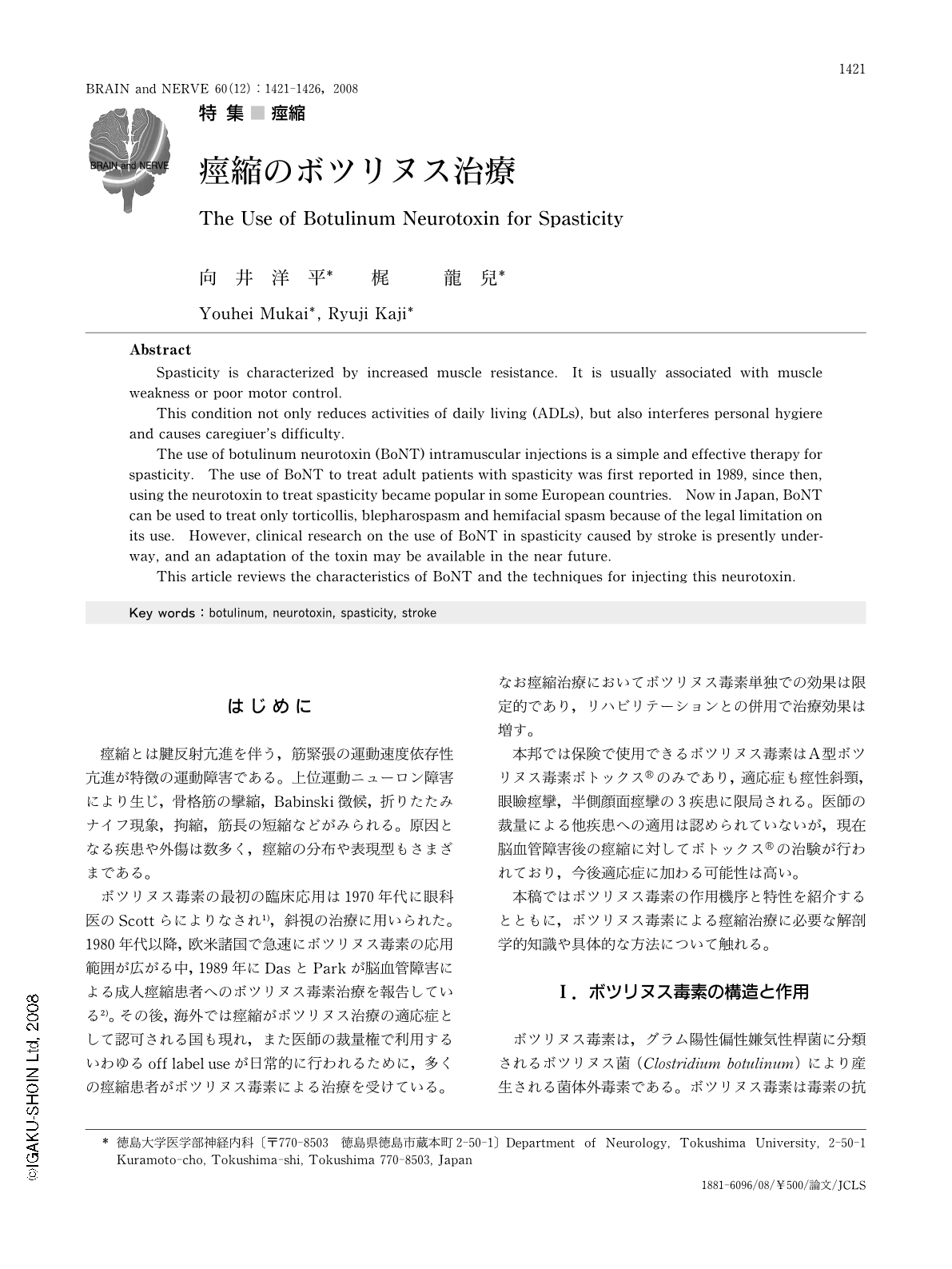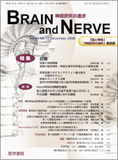Japanese
English
- 有料閲覧
- Abstract 文献概要
- 1ページ目 Look Inside
- 参考文献 Reference
- サイト内被引用 Cited by
はじめに
痙縮とは腱反射亢進を伴う,筋緊張の運動速度依存性亢進が特徴の運動障害である。上位運動ニューロン障害により生じ,骨格筋の攣縮,Babinski徴候,折りたたみナイフ現象,拘縮,筋長の短縮などがみられる。原因となる疾患や外傷は数多く,痙縮の分布や表現型もさまざまである。
ボツリヌス毒素の最初の臨床応用は1970年代に眼科医のScottらによりなされ1),斜視の治療に用いられた。1980年代以降,欧米諸国で急速にボツリヌス毒素の応用範囲が広がる中,1989年にDasとParkが脳血管障害による成人痙縮患者へのボツリヌス毒素治療を報告している2)。その後,海外では痙縮がボツリヌス治療の適応症として認可される国も現れ,また医師の裁量権で利用するいわゆるoff label useが日常的に行われるために,多くの痙縮患者がボツリヌス毒素による治療を受けている。なお痙縮治療においてボツリヌス毒素単独での効果は限定的であり,リハビリテーションとの併用で治療効果は増す。
本邦では保険で使用できるボツリヌス毒素はA型ボツリヌス毒素ボトックス(R)のみであり,適応症も痙性斜頸,眼瞼痙攣,半側顔面痙攣の3疾患に限局される。医師の裁量による他疾患への適用は認められていないが,現在脳血管障害後の痙縮に対してボトックス(R)の治験が行われており,今後適応症に加わる可能性は高い。
本稿ではボツリヌス毒素の作用機序と特性を紹介するとともに,ボツリヌス毒素による痙縮治療に必要な解剖学的知識や具体的な方法について触れる。
Abstract
Spasticity is characterized by increased muscle resistance. It is usually associated with muscle weakness or poor motor control.
This condition not only reduces activities of daily living (ADLs), but also interferes personal hygiere and causes caregiuer's difficulty.
The use of botulinum neurotoxin (BoNT) intramuscular injections is a simple and effective therapy for spasticity. The use of BoNT to treat adult patients with spasticity was first reported in 1989, since then, using the neurotoxin to treat spasticity became popular in some European countries. Now in Japan, BoNT can be used to treat only torticollis, blepharospasm and hemifacial spasm because of the legal limitation on its use. However, clinical research on the use of BoNT in spasticity caused by stroke is presently underway, and an adaptation of the toxin may be available in the near future.
This article reviews the characteristics of BoNT and the techniques for injecting this neurotoxin.

Copyright © 2008, Igaku-Shoin Ltd. All rights reserved.


